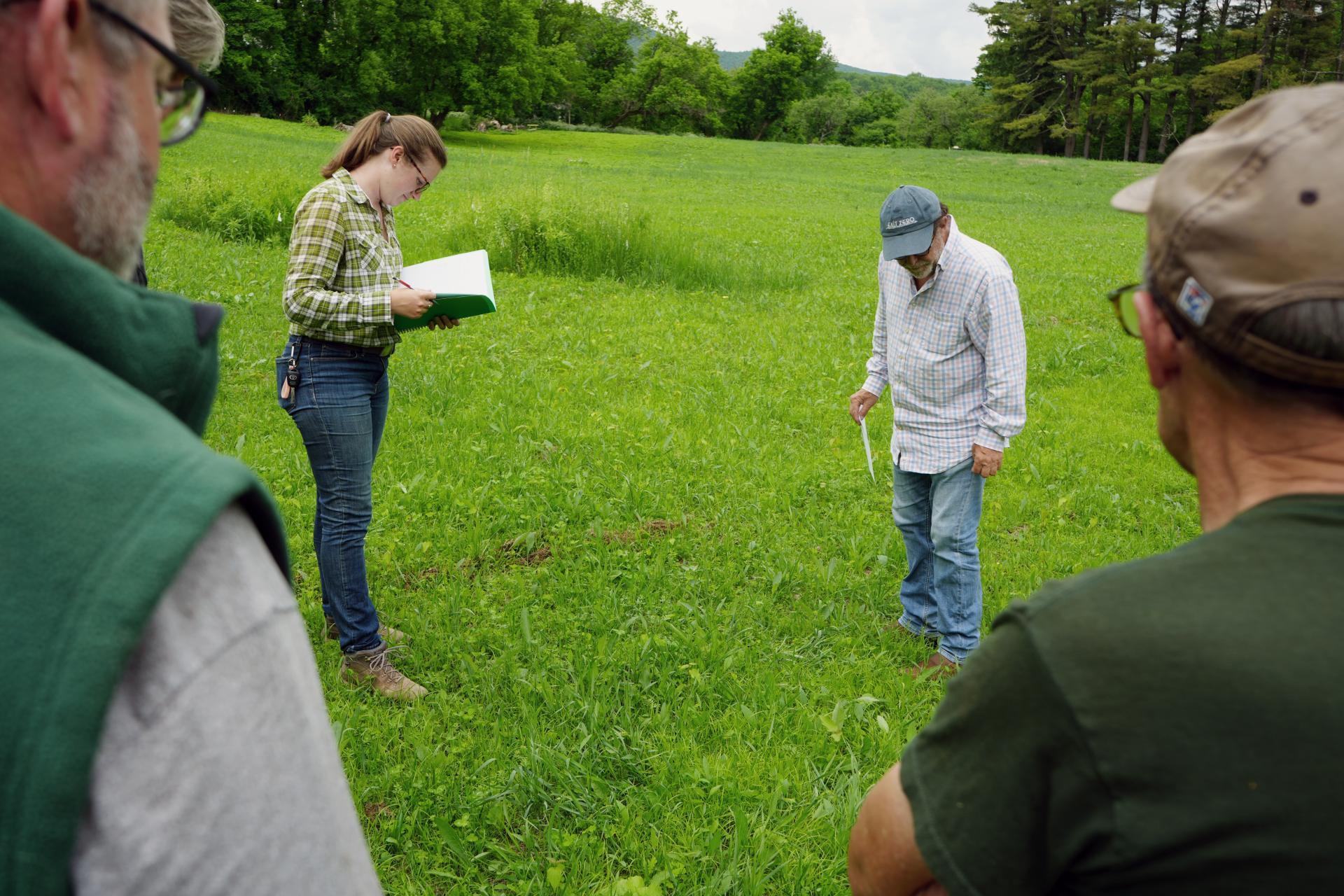You are here
Be A Better Gardener: Listen to Your Plants
Be A Better Gardener: Listen to Your Plants
by Thomas Christopher
There’s a persistent belief that talking to your plants benefits them. Supposedly, the vibrations of the sound waves enhance their growth. I won’t take a position on that. I am sure, however, that ecological landscaping expert Larry Weaner is right when he says that a two-way conversation is beneficial to both parties.
In January of this year, I attended the two-day symposium that New Directions in the American Landscape, the educational division of Larry Weaner Landscape Associates, hosts annually. The range of speakers was tremendous, and their talks were invaluable. I was particularly struck, though, by a simple narrative Larry delivered concerning his decades-long “conversation” with the eastern Columbine (Aquilegia canadensis).
According to Larry, this began when fresh out of high school and the new hire at a landscape design and install company in his native Philadelphia, he decided to install a garden in his parents' postage-stamp-sized urban front yard.
Among the plants he included was eastern columbine. At the time, Larry recently told me, he had no special interest in native plants horticulturally, although he was already an admirer of them in wild settings. The columbines Larry chose to plant in his parents’ front yard he selected purely on aesthetic grounds. He admired the delicate, three-lobed leaflets, and the red and yellow flowers which are said to look like a circle of doves leaning in to drink from a basin. Unfortunately, the columbines he planted soon disappeared, crowded out by neighboring hostas. The following year, however, the columbines reappeared, this time sprouting out of a gravel path that ran up the center of his design. Larry was delighted by the resulting ribbon of flowers, although he admits that his mother grumbled because it made the path complicated to traverse.
The plant, Larry says, had just told him something important. Unfortunately, he adds, “I learned nothing.” That’s because he didn’t respond with the crucial question: “What is going on here?”
Later, when he had completed a college degree in horticulture and started his own landscaping company in the Berkshire Hills of western Massachusetts, Larry came across eastern columbine again. This time it was a single plant, emerging from a crack between the stones in a bridge abutment. The plant was flourishing, with “practically no soil, practically no fertility, and very little water.”
Combining this observation with the memory of the plant preferring the gravel to the rich soil nearby in his parents’ garden, Larry realized that this was a very tough species and this, he supposed at the time, made it a very strong competitor. The latter supposition was corrected when Larry developed an interest in ecology as it relates to landscaping and learned about such matters as the relative competitive levels of different plants, and how plants seed around. When he repeated the experiment he had unconsciously carried out in his parents' yard and planted columbine near a house that was surrounded by a gravel curtain, and the plants disappeared from the garden to re-emerge in the gravel, he recognized that this response revealed a species that is the opposite of competitive. Rather than evolving to compete, eastern columbine had evolved to flourish in sites so impoverished that it had no competition.
This suggested a special use for the eastern columbine. Rather than planting it plentifully in the garden, Larry began to plant just a couple of specimens as seed sources. Not only would these plants colonize such obvious habitats as graveled areas, but they also found other resource-impoverished spots such as spots where ledge emerged from the soil, and colonized those, too. Essentially, Larry lets the columbines have the last word on where they should grow.
His understanding of the importance of this sort of dialogue, Larry acknowledged, has been reinforced by conversations he has had with Native Americans about their work with the flora. They regularly refer to “talking with plants.” Sometimes they meant that literally. Other times, it was a metaphor for a certain kind of thought process.
Larry applies this type of communication to his work with native plants. I am sure, however, that it would function also with non-native garden plants. Learning to listen to the plants, noting their responses to your inputs, and asking, “What is going on here?” will allow you to design the garden intelligently and enable you to work with Nature instead of against it.
To hear the rest of my conversation with Larry Weaner, log onto the “Growing Greener” podcast on the Berkshire Botanical Garden website at www.berkshirebotanical.org/.
Be-a-Better-Gardener is a community service of Berkshire Botanical Garden, located in Stockbridge, Mass. Its mission, to provide knowledge of gardening and the environment through a diverse range of classes and programs, informs and inspires thousands of students and visitors each year. Thomas Christopher is a volunteer at Berkshire Botanical Garden and is the author or co-author of more than a dozen books, including Nature into Art and The Gardens of Wave Hill (Timber Press, 2019). He is the 2021 Garden Club of America's National Medalist for Literature, a distinction reserved to recognize those who have left a profound and lasting impact on issues that are most important to the GCA. Christopher’s companion broadcast to this column, Growing Greener, streams on WESUFM.org, Pacifica Radio and NPR and is available at berkshirebotanical.org/growinggreener.
Help Our Garden Grow!
Your donation helps us to educate and inspire visitors of all ages on the art and science of gardening and the preservation of our environment.
All donations are 100 percent tax deductible.


